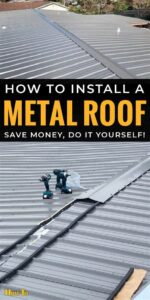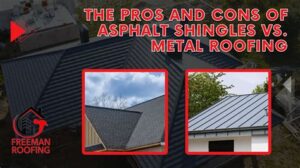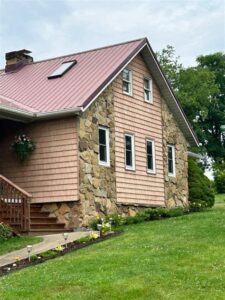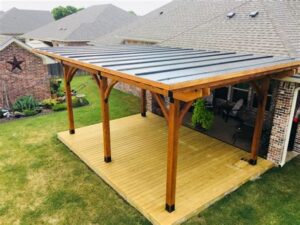Installing skylights in metal roofs can significantly enhance natural light and ventilation in your home, but the process requires careful consideration to avoid costly mistakes. In our comprehensive guide, Top Mistakes To Avoid With Skylights for Metal Roofs Installation, we delve into common pitfalls that can compromise both the aesthetics and functionality of your skylights. From choosing the wrong type to neglecting essential sealing techniques, each mistake can lead to leaks, energy loss, and even structural damage. Additionally, understanding local building codes and the importance of regular maintenance can ensure that your skylight installation is not just efficient but also durable. Join us as we explore these critical factors, offering valuable insights to help you achieve a successful skylight installation that enhances your home for years to come.
Understanding The Top Mistakes In Skylights Installation
Installing skylights can significantly enhance the aesthetic and functional aspects of a home, especially when it comes to metal roofs. However, there are several top mistakes that homeowners and contractors often make that can lead to costly repairs and inefficiencies. Understanding these pitfalls is essential for a successful installation.
One of the most common top mistakes is failing to consider the roof’s slope and the type of skylight best suited for it. Metal roofs can have unique drainage patterns, and installing a skylight that doesn’t accommodate these features can lead to leaks and structural issues over time.
Additionally, improper sealing is another critical error. A well-sealed skylight is vital for preventing water intrusion. Many forget to apply the correct sealants or neglect ventilation, which can cause condensation buildup that may harm roofing materials.
Furthermore, a lack of adherence to local building codes is a prevalent issue. Regulations can vary significantly based on location, and overlooking these codes can result in fines or the need to redo the installation entirely.
Another significant mistake involves neglecting regular maintenance. Once installed, skylights require periodic checks to ensure they remain watertight and free from debris that could obstruct their functionality.
By learning about these top mistakes in skylight installation for metal roofs, homeowners can take proactive steps to ensure that their skylights serve their intended purpose while avoiding unnecessary issues down the line.
Choosing The Wrong Skylight for Your Metal Roof
One of the top mistakes homeowners make when installing skylights on metal roofs is choosing the wrong type of skylight. The compatibility between the skylight and the metal roofing material is crucial for ensuring both functionality and longevity. Here are some key considerations to avoid making this mistake:
- Material Match: Ensure that the skylight frame is compatible with your metal roof material. For instance, if your roof is made of aluminum, the skylight should ideally have aluminum components to prevent galvanic corrosion.
- Thermal Performance: Select a skylight with good thermal performance properties. Look for double or triple glazing options, which can minimize heat loss and improve energy efficiency.
- Style and Design: The design of the skylight should complement your metal roof’s aesthetic. Consider the pitch and curvature of your roof when choosing the skylight shape—flat, dome, or pyramid options may work better depending on the roof design.
- Size Matters: A skylight that is too large can compromise the structural integrity of the roof and lead to potential leaks, while a skylight that is too small may not provide adequate light. Measure carefully to find the perfect size for your roof.
- Water Management: Choose skylights designed to handle water drainage effectively since improper water management can lead to damage and leaks over time.
Avoiding the top mistakes related to skylight selection will ensure that your installation is not only visually appealing but also functional and durable.
Neglecting Proper Sealing Techniques During Installation
One of the top mistakes often made during the installation of skylights on metal roofs is neglecting proper sealing techniques. This oversight can lead to significant issues, including leaks, water damage, and decreased energy efficiency. To ensure a successful installation, it’s crucial to employ the appropriate sealing materials and methods designed specifically for metal roofing.
Here are some essential sealing practices to consider:
- Use High-Quality Sealants: Opt for sealants that are compatible with both the skylight material and the metal roofing. Silicone and polyurethane-based sealants are often recommended for their durability and waterproof properties.
- Ensure Clean Surfaces: Before applying the sealant, thoroughly clean the surfaces to remove any debris, rust, or existing old sealant. This ensures better adhesion and effectiveness of the seal.
- Create a Proper Bonding Surface: For metal roofs, it might be necessary to apply a primer to the area around the skylight before applying sealant. This step can enhance the bond between the sealant and the metal.
- Follow Manufacturer’s Instructions: Always adhere to the specific sealing guidelines provided by the skylight manufacturer. Each product may have different requirements that are crucial for maintaining warranty coverage and optimal performance.
Ignoring these sealing techniques can not only lead to immediate problems but may also result in long-term damages that can be costly to repair. Therefore, taking the time to properly seal skylights during installation is an essential step that should not be overlooked.
Ignoring Local Building Codes And Regulations
When it comes to installing skylights on metal roofs, one of the top mistakes that homeowners and contractors often make is failing to adhere to local building codes and regulations. This oversight can have serious implications, affecting not just the legal aspects of your installation, but also the safety and efficiency of your skylights.
Local building codes are established to ensure that constructions meet specific safety standards and performance criteria. These regulations can vary significantly between different regions, so it’s crucial to familiarize yourself with the applicable laws before starting your skylight installation project.
Not abiding by these codes can lead to various issues, such as:
- Potential Fines: Non-compliance can result in hefty fines and penalties from local authorities.
- Increased Liability: If any accidents occur due to non-compliance, you might be held liable for damages or injuries.
- Insurance Issues: Some insurance policies may not cover damages related to unauthorized installations, leaving homeowners financially vulnerable.
- Inability to Sell Property: Local governments can refuse to issue certificates of occupancy if your skylight installation doesn’t comply, complicating future property transactions.
It’s advisable to consult with local building inspectors or a knowledgeable contractor before proceeding with your skylight installation. Ensuring compliance with local building codes is an essential step that can help you avoid some of the top mistakes in skylight installations, ensuring a safer and more effective outcome for your property.
Overlooking Regular Maintenance After Installation
When it comes to installing skylights on metal roofs, one of the most critical top mistakes homeowners can make is overlooking regular maintenance after installation. Just because your skylight has been successfully installed does not mean it will remain trouble-free indefinitely. Without proper upkeep, a skylight can develop issues that may compromise its integrity and functionality.
Regular maintenance helps to identify and address minor problems before they escalate into significant repairs. Here are some essential maintenance tips to consider:
| Maintenance Task | Frequency | Description |
|---|---|---|
| Inspect Seals and Flashing | Every 6 Months | Check for any signs of wear, gaps, or deteriorating materials that may lead to leaks. |
| Clean Glass Surface | Quarterly | Remove dirt, debris, and any obstructive elements to ensure maximum light entry. |
| Check for Condensation | Seasonally | Monitor for any buildup of moisture that can indicate ventilation issues. |
| Examine Interior for Signs of Damage | Every 6 Months | Look for discoloration, water stains, or mold growth on surrounding areas. |
| Inspect Roof Condition | Annually | Ensure that the metal roof is in good condition and that no surrounding materials are affecting the skylight. |
By being proactive and implementing a regular maintenance routine, homeowners can significantly extend the life of their skylights and avoid the costly repercussions associated with neglect. Remember, taking care of your skylights is just as important as the installation process itself, and avoiding this top mistake can save time and money in the long run.
Frequently Asked Questions
What are the common mistakes to avoid when installing skylights on metal roofs?
Common mistakes include improper flashing, inadequate sealing, incorrect placement, not considering the roof pitch, and failing to account for thermal expansion.
How can improper flashing affect skylight installation?
Improper flashing can lead to leaks and water damage. It is crucial to ensure that flashing is installed correctly to divert water away from the skylight.
Why is adequate sealing important in skylight installations?
Adequate sealing prevents water intrusion and air leaks, which are critical for maintaining energy efficiency and indoor comfort.
What role does roof pitch play in skylight installation?
The roof pitch influences how water drains off the skylight. Installing a skylight on a pitch that is too low can increase the risk of leaks.
How does thermal expansion affect metal roofs with skylights?
Thermal expansion can cause metal roofing to expand and contract, which may lead to stress on the skylight frame if not properly accounted for in the installation.
What are the recommended placement tips for skylights on metal roofs?
Skylights should be placed away from shaded areas to maximize natural light, and it’s important to avoid placing them directly above vents or in locations prone to debris accumulation.
What can homeowners do to prevent problems after skylight installation?
Homeowners should regularly inspect the skylights, ensure proper maintenance, and address any signs of leaks or damage promptly to prevent future issues.





